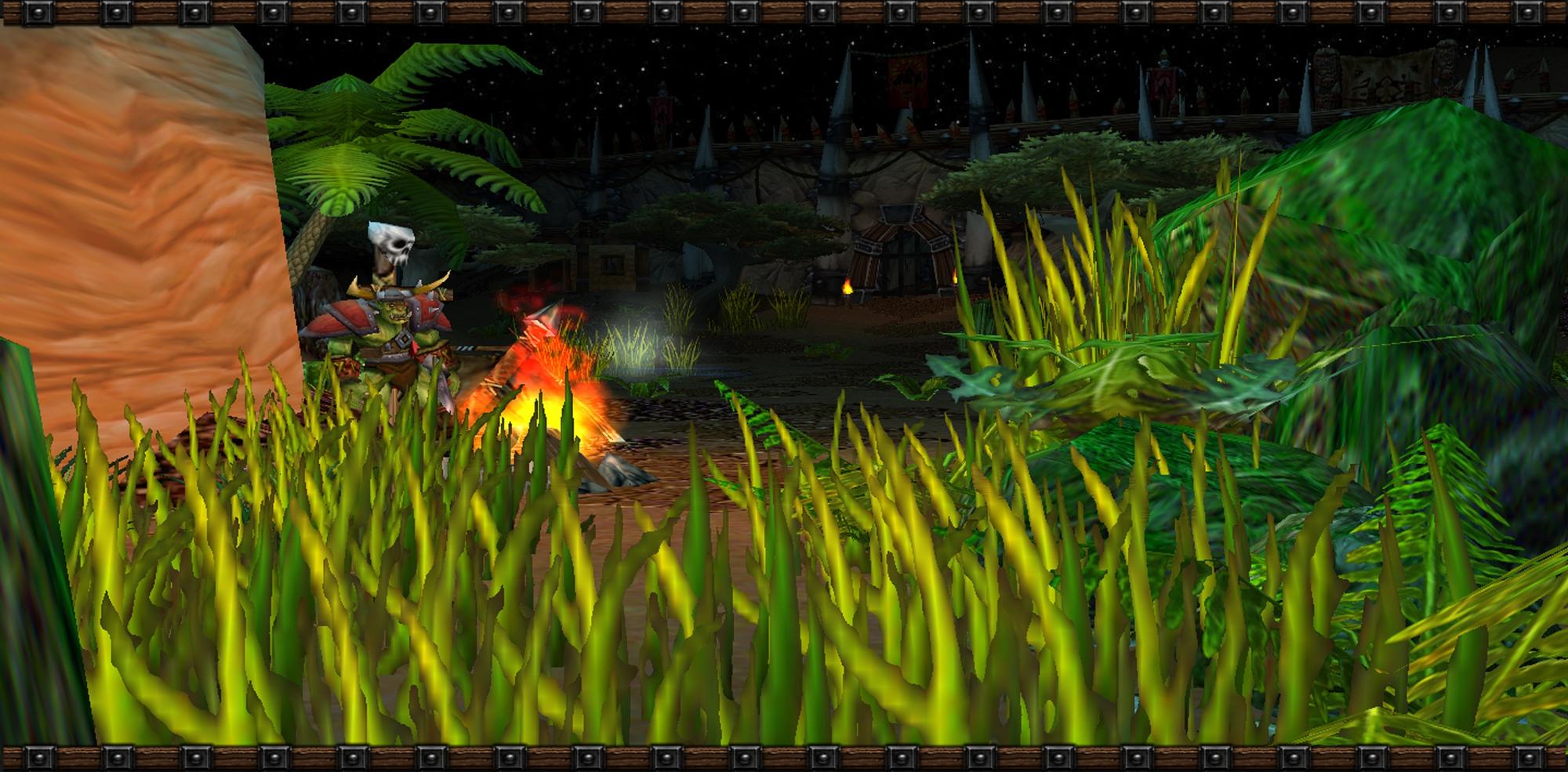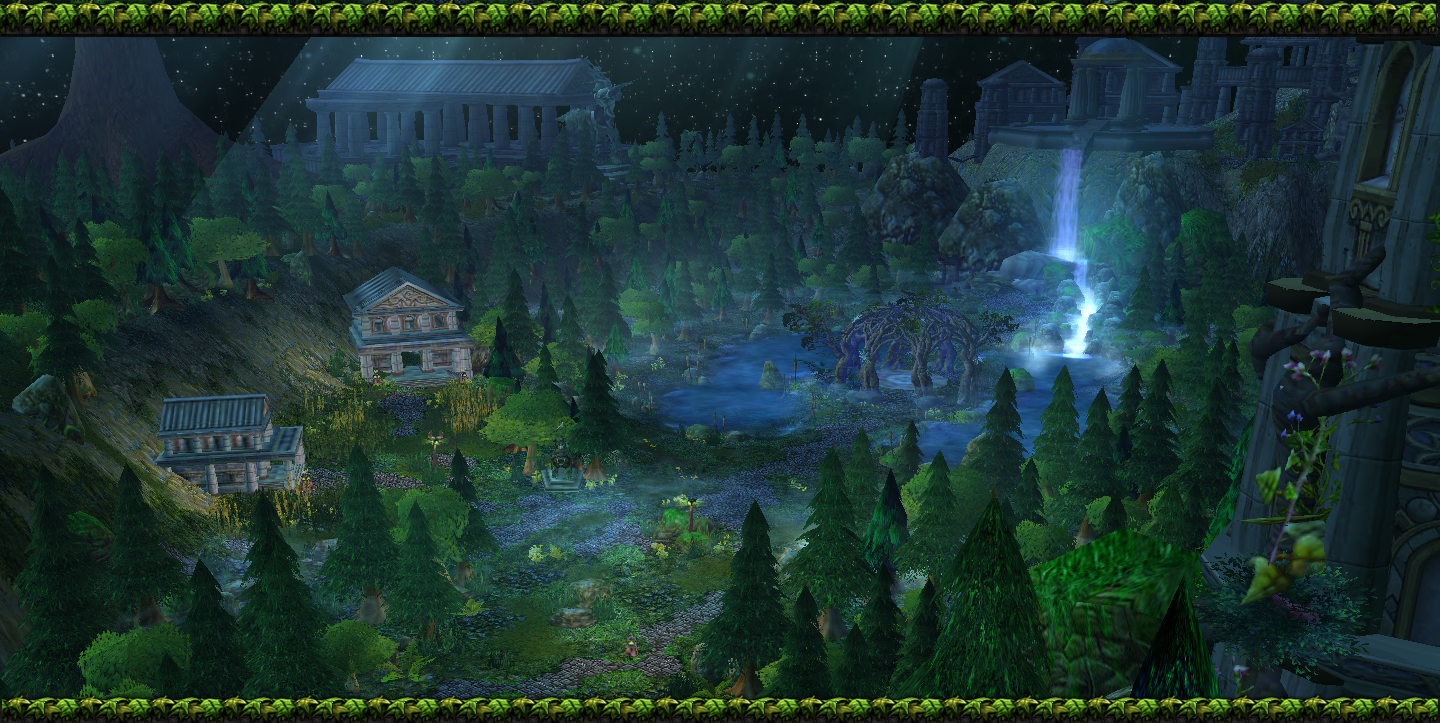Contrary to my fellow great terrain reviewers here, I do not like the grove so much.
I mean, it's pretty, but I know for a fact that it's a WoW rip, or at least that it looks
extremely similar to it. However, I'm not against that, I just also happen to know
that it's one bigass model, and not something you created by yourself. So I'm not
that amazed by it in and off itself.
HOWEVER; I do like your overall taste and skill in composition, doodad placement, you
have a good developed terrainers sense of how a landscape is puzzled together. Which
is better a start than many terrainers. The three things you should work on, though,
is
scaling,
lighting and
depth. As follows:
Scaling
In the first terrain, the grass is over-sized, while yes such size grass does exist, it's fairly
uncommon in barren terrain. As well as being oddly sized, the grass is also placed way too
close to the camera, but I'll address that more in the depth part. In the second terrain,
there is an obvious discrepancy to the trained eye, which is the trees. All the trees are
roughly the same size, you're doing a decent job in varying the trees, but you should
consider the differences of scaling more, some trees are very small, while others do tower
over other trees. Randomly scaled trees in a forest on-screen in a terrain makes for a
natural and pleasing look to the eye.
Lighting
Lighting is a tool used by terrainers to give a terrain depth and direction. The most
common tools in a terrainer's arsenal to make natural lighting in a terrain is the Glow
doodad, along with various others like the "light from above" doodad and so on. Instead
of continuing pestering you with how great proper lighting is for a terrain, I'll just direct
you to where you can find great tutorials on how to add natural lighting to your terrains:
http://www.hiveworkshop.com/forums/...e-terraining-hives-terraining-section-184427/
- At the top, in the index, click the "How can I learn and improve my terraining techniques?"
and you'll be presented several tutorials on terraining varying from Beginner to Experienced.
Depth
Is mostly non-existent in both terrains. It is done through scaling, scaling far away
objects smaller and close objects larger, through lighting which obscures certain parts of
the terrain, and through fog-transition. This is where I'll continue about the grass, sure
I did say close objects should be larger than far away objects, but don't take that to
heart. "Larger" doesn't necessarily mean "EXTREMELY LARGE". Another thing you'll
notice if this extremely long berating doesn't scare you away, is that some doodads can
be used close to the camera and some can't. It all depends on the texture, bad texture
is a no-go, good textures are viable. Fog-transition is the best and easiest method of
giving a terrain depth. Basically, play around with the fog tool, and ALWAYS make the
map much larger than the actual area you want to be visible in the terrain. When the
visible area is defined, you should look to the area behind the visible area, and make lines
of mountains that slowly fade into the fog, preferably several lines behind each other,
ranking from "somewhat covered by fog" to "completely covered by fog", this is why
sky/fog transition also is important, the sky should never conflict with the fog (in terms
of contrasting). As that will completely remove the sense of depth in a terrain.
So, I don't know what just came over me, but I really felt like parting some knowledge
from me. Maybe it's the fact that it's been so long since I saw a new face around here
or maybe I've just got withdrawal. I'm not sure, I just hope my words may be of some
help















